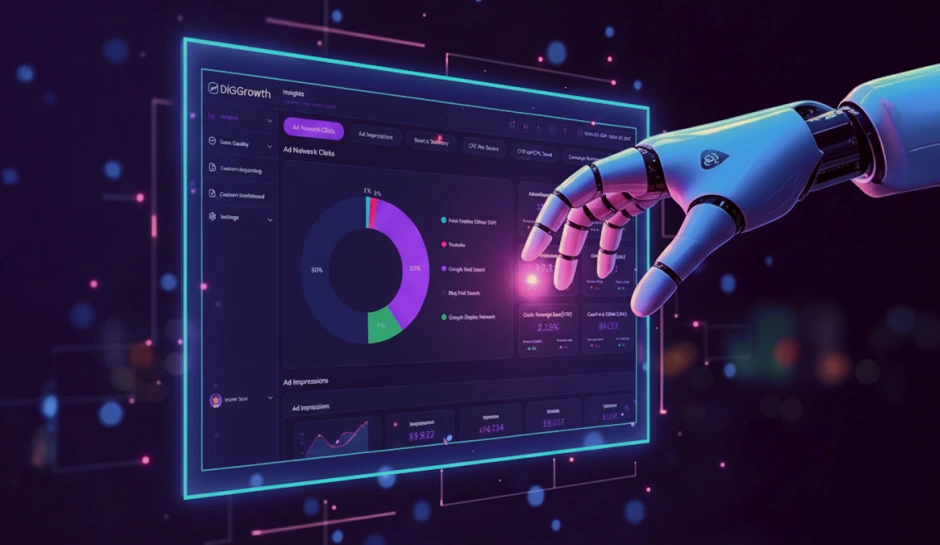
Why SaaS Companies Are Investing in Automated Data Governance Solutions
As you scale, data governance is not just about staying compliant. It is about giving your teams a reliable foundation to build, analyze, and grow. In this article, you will see why SaaS companies are turning to automated data governance solutions, what benefits they are unlocking, and how you can choose the right one to support your roadmap.
If you are building or scaling a SaaS company, managing data is one of the most important challenges you will face. Every customer interaction, feature rollout, and system integration adds new layers of complexity. Without a clear structure in place, your data becomes inconsistent, unsecured, and difficult to use across teams.
Data governance solutions help you solve this by giving you control over how data is collected, accessed, and used. They let you define clear policies, automate enforcement, and ensure compliance with evolving regulations like GDPR, HIPAA, or SOC 2. More importantly, they allow your teams to move fast without compromising security or trust.
For SaaS companies, the benefits are direct. You can reduce the time spent preparing for audits, improve collaboration between departments, and deliver accurate insights backed by clean, reliable data. Whether you are serving ten clients or ten thousand, a modern data governance solution gives you the foundation to grow confidently.
What Are Data Governance Solutions and How Do They Help SaaS?
Data governance solutions are platforms that help you define, enforce, and monitor how data is accessed, used, and protected across your organization. For SaaS companies, it is essential for managing growing volumes of customer and product data while meeting security and compliance requirements.
Unlike manual governance processes, modern solutions offer automation. They apply policies consistently across cloud databases, analytics tools, and internal systems, giving you full visibility and control without slowing your teams down.
Key capabilities include:
- Access Control: Manage who can view or edit data based on roles or departments.
- Metadata and Lineage: Track where data comes from and how it is used across systems.
- Policy Enforcement: Automate rules for data privacy, retention, and sharing.
- Readiness: Generate reports and logs to support compliance checks.
For SaaS businesses, these tools reduce risk, improve collaboration, and ensure your data remains trustworthy as your platform grows.
Why Automation Matters More in the SaaS Context
SaaS companies operate in complex, high-velocity environments. Data comes in from multiple products, integrations, customer touchpoints, and internal systems. Managing this data manually creates risks, slows down operations, and leads to inconsistencies across teams.
Automated data governance solutions are designed to meet the unique demands of SaaS, where scalability, speed, and cross-functional collaboration are non-negotiable.
1. Scale and Speed of SaaS Operations
SaaS platforms process massive volumes of data in real time. This includes user activity logs, product interactions, billing records, API calls, and support tickets. As customer bases grow, so does the volume of data, and so does the pressure to govern it quickly and accurately.
Manual governance workflows cannot keep pace. Updating access rules, tracking data lineage, or flagging policy violations manually becomes time-consuming and error-prone.
Example
A CRM SaaS platform managing millions of customer records across multiple regions must provide granular access controls for sales, customer success, and support teams. These permissions often change daily as team members join, switch roles, or leave. Without automation, managing access becomes chaotic and leaves data exposed. An automated governance solution updates access policies in real time, logs all changes, and ensures every user sees only the data they are authorized to access.
Why It Matters: You avoid operational slowdowns, reduce risk exposure, and maintain compliance without adding manual overhead.
2. Frequent Data Model Changes
SaaS products evolve rapidly. New features, modules, and integrations often result in constant changes to data models, new tables, attributes, and relationships. If governance policies are not updated instantly, teams may end up working with outdated, unclassified, or unsecured data.
Example
An HR SaaS company rolls out a new payroll module that introduces compensation and tax-related data. This data needs to be classified as sensitive, governed by specific privacy rules, and made visible only to authorized HR users. An automated data governance solution detects the schema change, classifies the new fields using pre-defined rules, and applies masking and retention policies, all without human intervention.
Why It Matters: You reduce time-to-governance for every product update, prevent sensitive data from slipping through the cracks, and maintain consistent data handling practices across evolving schemas.
3. Cross-Functional Data Ownership
In SaaS companies, data is a shared resource. Marketing, sales, finance, product, and customer success teams all depend on data for their day-to-day decisions. Each team requires tailored access to relevant data, without violating compliance or overexposing sensitive information.
Manually coordinating data access between departments leads to delays, duplicated effort, and security gaps.
Example
A marketing automation SaaS company has three core teams: Growth, Product, and Support. Growth teams need anonymized user behavior data for campaign targeting. Product teams require detailed feature usage logs. Support teams need access to user feedback without seeing billing or personal data. Automated governance ensures that each team has filtered access based on their role, geography, and data sensitivity. It also tracks who accessed what and when, supporting both operational needs and compliance audits.
Why It Matters: You enable self-service analytics, prevent data misuse, and eliminate the dependency on IT teams to approve or manage access manually.
Pro Tip- Automated data governance is not just about efficiency. It is about creating a reliable data foundation that scales with your product, your customers, and your internal teams.
Common Use Cases of Data Governance Solutions in SaaS Companies
For SaaS companies, data is central to nearly every business function—from customer acquisition and onboarding to product development and support. Without a reliable governance framework, the risk of misused, duplicated, or inaccessible data increases. This is where data governance solutions add practical value by enabling secure, organized, and compliant data use across your entire organization.
Below are key use cases where data governance solutions directly support SaaS operations:
1. Role-Based Access Control
Not every team should have access to all types of data. A governance solution allows you to define and automate access policies based on user roles, departments, and regions. This helps minimize the risk of unauthorized access while supporting each team’s specific data needs.
SaaS Example: In a B2B analytics platform, the product team needs event-level data, while sales should only view customer segments. Role-based policies ensure each team sees what is relevant without exposing sensitive fields like user credentials or payment history.
2. Self-Service Analytics with Guardrails
Governance tools support data democratization by allowing teams to explore and analyze data independently. At the same time, they enforce boundaries to prevent misuse or compliance violations.
SaaS Example: Marketing teams at a SaaS subscription platform can run campaign analysis using curated datasets, while governance rules ensure personally identifiable information (PII) is masked or hidden.
3. Automated Compliance and Policy Enforcement
SaaS platforms often operate across multiple jurisdictions, making it difficult to maintain consistent data privacy and security standards. Governance tools help enforce region-specific policies and generate audit-ready reports.
SaaS Example: A customer experience SaaS company serving users in the US and EU must apply different retention policies for customer data. Governance solutions enforce retention rules based on user location and maintain logs for regulatory audits.
4. Metadata Management and Data Cataloging
As your SaaS product evolves, new data sources are added frequently. Governance platforms help you organize datasets through metadata tagging and searchable catalogs.
SaaS Example: A learning management SaaS tool tracks user progress, quiz results, and content interactions. Governance solutions automatically tag each dataset with context and ownership, making it easy for data analysts to locate the right information quickly.
5. Real-Time Data Masking
Some teams need access to operational data without viewing sensitive or personal information. Governance solutions offer dynamic masking features that allow teams to work with data while protecting user privacy.
SaaS Example: Customer support agents in a helpdesk SaaS platform can view order issues and activity logs, but sensitive fields like credit card numbers or home addresses are masked in real time.
Top Tools SaaS Companies Are Using
Choosing the right data governance solution is essential for scaling securely and efficiently. SaaS companies need platforms that can automate access, ensure compliance, and keep data aligned across functions. Below are some of the most trusted tools in this space, each with its own strength and application in the SaaS ecosystem.
| Tool | Core Strength | SaaS Example |
|---|---|---|
| DiGGrowth | Integrated governance with marketing and analytics insights | SaaS companies use DiGGrowth to unify marketing, revenue, and customer data while applying automated access controls and data quality rules. |
| Collibra | Enterprise-wide governance workflows | A SaaS fintech firm uses Collibra to centralize policy enforcement across teams and data sources. |
| BigID | Privacy and identity-focused governance | Compliance-heavy SaaS platforms use BigID to automate privacy classification and meet evolving regulatory demands. |
| Immuta | Policy automation for technical and data teams | ML-based SaaS tools use Immuta to dynamically control access based on user purpose and data type. |
Each platform plays a different role in supporting governance. DiGGrowth stands out by combining governance with cross-functional visibility into marketing performance and customer data quality, making it especially valuable for growth-focused SaaS businesses.
When selecting a solution, assess how well it integrates with your current tech stack, supports your compliance obligations, and enables secure collaboration across internal teams.
Key Takeaways
- Data governance solutions provide structure and control for SaaS companies managing fast-growing, high-volume data environments.
- Automation enables consistent policy enforcement, especially in dynamic platforms with changing data models and cross-functional access needs.
- Common governance applications include real-time data masking, role-based access, metadata tagging, and compliance monitoring.
- Tools like DiGGrowth offer integrated governance with analytics visibility, making them ideal for SaaS teams focused on growth and performance.
Conclusion
SaaS companies deal with constant change, from evolving products to expanding data sources and shifting compliance expectations. Without a strong governance solution, it becomes difficult to maintain consistency or protect sensitive information as your platform scales.
A modern data governance framework does more than reduce risk. It creates clarity. It enables teams to access the right data with confidence, supports faster execution, and ensures that every decision is backed by accurate, secure information. When governance becomes part of your growth infrastructure, you gain more than control, you build a foundation for long-term agility and trust.
Ready to align your data governance with your next stage of SaaS growth? Let’s talk.
Our experts at DiGGrowth can help you design and implement a governance strategy tailored to your product, team structure, and data landscape. Contact us at info@diggrowth.com to get started.
Ready to get started?
Increase your marketing ROI by 30% with custom dashboards & reports that present a clear picture of marketing effectiveness
Start Free Trial
Experience Premium Marketing Analytics At Budget-Friendly Pricing.

Learn how you can accurately measure return on marketing investment.
Additional Resources
How Predictive AI Will Transform Paid Media Strategy in 2026
Paid media isn’t a channel game anymore, it’s...
Read full post postDon’t Let AI Break Your Brand: What Every CMO Should Know
AI isn’t just another marketing tool. It’s changing...
Read full post postFrom Demos to Deployment: Why MCP Is the Foundation of Agentic AI
A quiet revolution is unfolding in AI. And...
Read full post postFAQ's
Make a list of the platforms, databases, and SaaS tools that store critical data—such as Snowflake, BigQuery, HubSpot, Salesforce, or your product analytics stack. Also consider which teams need governed access, from marketing and product to customer success and finance. The right solution should support all major integrations and allow team-specific access controls without extra configuration.
Some SaaS companies require real-time access decisions, especially those working with customer interactions, usage analytics, or payments. If your teams rely on fresh data for operational decisions, you need a tool that can apply masking, filtering, or access rules instantly without delay.
Product, marketing, sales, customer success, and engineering teams all benefit. Each team gains secure access to relevant data while governance tools ensure privacy, consistency, and traceability across departments.
Key factors include the maturity of your data architecture, integration with your current tech stack, real-time policy enforcement needs, and support for compliance standards like GDPR, SOC 2, or HIPAA.
If your SaaS product leverages large language models or AI workflows, you must consider how the governance tool handles access to training data, prompt logs, model outputs, and version control. The solution should provide visibility into data lineage and apply ethical data usage policies consistently across AI systems.


